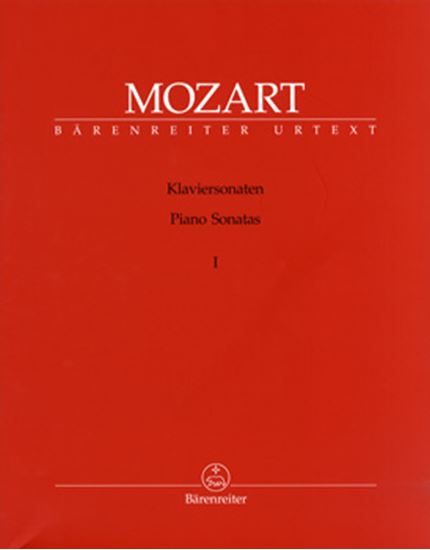Mozart, Wolfgang Amadeus : Sonate für Klavier Nr.6 'Dürnitz' D-Dur K.284 K6.205b
Work Overview
Publication Year:1784
First Publisher:Torricella
Instrumentation:Piano Solo
Genre:sonata
Total Playing Time:26 min 30 sec
Copyright:Public Domain
Commentary (2)
Author : Inada, Saeko
Last Updated: August 1, 2007
[Open]
Author : Inada, Saeko
This sonata concludes the set of six works, which were completed rapidly in Munich in early 1775. It is the largest in scale among the six and is considered the work Mozart valued most. This is also evident from its publication in 1784 during his Vienna period, preceding the other five works. The common name "Dürnitz Sonata" originates from Mozart's letter stating he "composed for Baron Dürnitz," but it is believed that not only this work but all sonatas from No. 1 to No. 6 were written for him (sometimes all six works are collectively referred to as the "Dürnitz Sonatas").
While possessing a gallant style, the placement of a variation movement as the third movement is often pointed out as a French influence. Furthermore, it is characteristic that the style of Mannheim School symphonies can be observed in the first movement. It should be noted that Mozart's direct exposure to the music of the Mannheim Court Orchestra would occur several years later.
First Movement: Allegro, D major, 4/4 time. Sonata form.
The influences of the Mannheim School are said to include:
- The brilliant opening with arpeggios
- Clear dynamic contrasts
- The use of the descending second "sigh" motif
A movement with a broad, symphonic sound.
Second Movement: Andante, A major, 3/4 time. Rondo form.
The original edition includes the movement indication "Rondeau en Polonaise (Polonaise-style Rondo)." The polonaise rhythm of the theme is ornamented with each presentation, taking on the appearance of elegant variations.
Third Movement: (Andante), D major, 2/2 time. Variation form.
- Consists of a theme and 12 variations.
- It possesses a scale and structure substantial enough to stand as an independent set of variations.
For the keys of Sonatas No. 1 to No. 6, please refer to the explanation for Sonata No. 1.
Author : Inada, Saeko
Last Updated: February 26, 2021
[Open]
Author : Inada, Saeko
(Andante), D major, 2/2 time signature. Variation form. It consists of a theme and 12 variations. Its scale and structure are substantial enough for it to stand as an independent set of variations.
Movements (3)
Mov.2 Rondeau en Polonaise-Andante
Total Performance Time: 5 min 00 sec
Mov.3 Theme with 12 variations
Total Performance Time: 14 min 00 sec
PTNA & Partner Channel Videos(0items)
Reference Videos & Audition Selections(3items)
Sheet Music
Scores List (11)

(株)全音楽譜出版社

(株)全音楽譜出版社

(株)全音楽譜出版社

(株)全音楽譜出版社

(株)音楽之友社

(株)全音楽譜出版社

ヘンレ社(ヤマハ)





